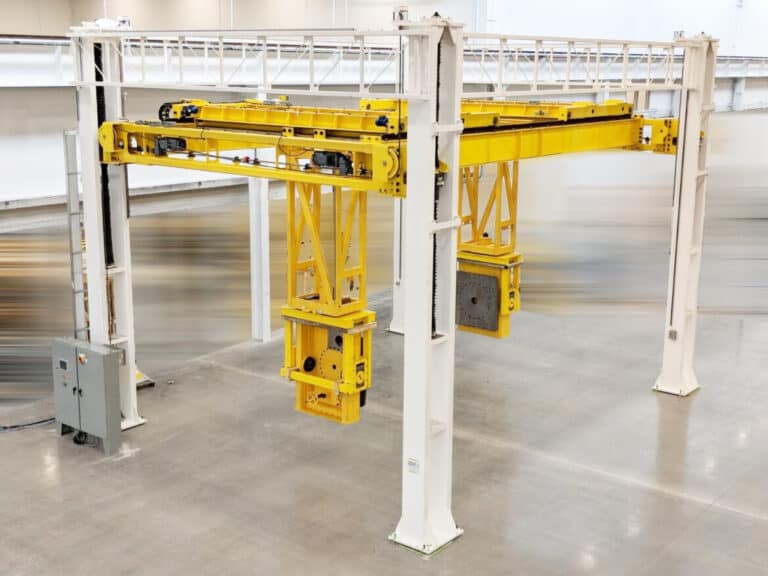How the best shipping companies handle complex logistics networks
Wiki Article
Understanding the Inclusions of moving and Freight Forwarding on the planet of Residential and Global Shipping
Guiding with the intricacies of moving and Freight forwarding can be difficult. Both procedures include distinctive treatments and demands that are important for successful transportation. Understanding the differences in logistics, documentation, and threat management is necessary for organizations and people alike. This understanding can substantially influence the performance and security of shipments. Lots of are unaware of the specific parts that affect the general experience and outcomes. What factors should one take into consideration to assure a smooth transition?The Essentials of moving and Freight Forwarding
moving and Freight forwarding are essential components of the international logistics market. They assist in the transfer of products and individual valuables across worldwide and domestic boundaries. moving mainly involves the moving of people or households, encompassing commercial and domestic needs. It commonly includes packaging, packing, transferring, and unloading products at the location. In contrast, Freight forwarding is concentrated on the shipment of items, usually wholesale, making use of numerous transportation settings, such as land.freight, sea, or air forwarders work as middlemans, collaborating logistics to assure timely delivery while maneuvering with facility policies and custom-mades treatments. Both procedures require careful planning, company, and interaction to ensure performance and reduce interruptions. Comprehending these principles is important for any person involved in logistics, as they prepared for more sophisticated aspects of shipping and transportation administration.Secret Parts of Freight Forwarding Solutions
Freight forwarding solutions incorporate several vital parts that ensure smooth transport of goods. Key responsibilities of Freight forwarders include taking care of logistics, coordinating shipments, and handling customs clearance. Additionally, recognizing crucial delivery documents is important for compliance and reliable activity of cargo.Freight Forwarder Responsibilities
A trusted Freight forwarder plays an essential function in collaborating the transportation of goods, making certain that deliveries are taken care of efficiently and in compliance with regulations. Their duties incorporate numerous key jobs, consisting of selecting ideal transportation courses, discussing Freight rates, and taking care of logistics. They work as middlemans in between providers and shippers, guaranteeing that cargo is effectively packaged and identified for secure transit. Furthermore, Freight forwarders track shipments, giving updates to clients concerning the condition and expected distribution times. They likewise assess and handle threats connected with transportation, advising insurance coverage alternatives as required. By facilitating interaction and paperwork, Freight forwarders simplify the delivery procedure, lowering prospective hold-ups and enhancing general supply chain efficiency.Shipping Documents Basics

Comprehending Customs Clearance and Documents
Precise documents is important in the personalizeds clearance procedure, as it guarantees conformity with various guidelines. An overview of personalizeds guidelines highlights the complexities dealt with by carriers and Freight forwarders. Common clearance obstacles can considerably impact delivery timelines and prices, making understanding this aspect essential for efficient logistics.Relevance of Accurate Paperwork
Guiding via the intricacies of global delivery requires a keen understanding of customizeds clearance and the essential duty of documents. Accurate paperwork is necessary for ensuring that shipments follow guidelines and reach their locations without delays. Correctly prepared records, including bills of lading, commercial invoices, and packing listings, assist in smooth communications with custom-mades authorities. Mistakes can lead to shipment delays, penalties, or also confiscation of items. Thorough documents help in monitoring shipments and settling disputes. Companies engaged in moving and Freight forwarding have to prioritize meticulous documents practices to navigate the detailed landscape of worldwide shipping effectively. This persistance not only streamlines procedures however additionally enhances consumer contentment by making certain timely distribution.Customizeds Regulations Summary
Guiding custom-mades regulations is an important element of international profession that straight affects the success of moving and Freight forwarding operations. Reliable customizeds clearance calls for an understanding of various laws, consisting of tariffs, obligations, and import/export restrictions. Precise documents is essential, as it ensures conformity with legal demands and promotes the effective movement of products throughout boundaries. Key papers typically include industrial invoices, packaging checklists, and bills of lading, which give comprehensive details concerning the shipment. Additionally, customs brokers play a critical role in steering complicated guidelines, working as middlemans in between customizeds and carriers authorities. By preserving extensive expertise of personalizeds procedures, businesses can greatly lower hold-ups and decrease prices related to global delivery.Common Clearance Challenges
Numerous challenges can arise throughout the customizeds clearance process, typically complicating the movement of items throughout boundaries. One significant concern wants documentation, which can lead to fines and hold-ups. Exporters and importers have to guarantee all required documentation, such as invoices, packing checklists, and certificates of beginning, is full and precise. Additionally, inconsistencies in appraisal can set off analysis from custom-mades authorities, resulting in extra obligations or inspections. Language obstacles may additionally pose obstacles, as miscommunication can cause misconceptions concerning policies. Additionally, changes in personalizeds policies can develop confusion, necessitating continuous alertness by shippers. Eventually, getting over these clearance challenges needs comprehensive prep work and a clear understanding of customizeds requirements to promote smooth international deals.Packaging and Identifying Demands
Although frequently ignored, product packaging and labeling needs play a necessary duty in the shipping process, guaranteeing that products are shielded and easily identifiable throughout their journey. Appropriate product packaging safeguards products from damage during transit, while also assisting in reliable handling and storage space. Making use of ideal products, such as bubble cover, foam, or durable boxes, can stop breakage and loss.Labeling is equally vital. Clear and exact tags share vital information, consisting of the destination, taking care of directions, and components. Labels have to follow guidelines particular to global and domestic shipping, which may include harmful products identification or international relocation services customizeds declarations.Moreover, standardized labeling methods streamline the monitoring process and enhance total logistics effectiveness. By adhering to product packaging and labeling requirements, businesses reduce the danger of delays, damages, or misdelivery. Eventually, these practices add considerably to the success of moving and Freight forwarding operations, making sure a seamless shipping experience for all events involvedTracking Deliveries: Significance and Approaches
Effective product packaging and labeling established the structure for effective shipment monitoring, but tracking shipments is just as vital in the delivery process. Shipment monitoring offers real-time presence, which assists customers and businesses keep track of the progress of their products. This openness enhances client complete satisfaction, given that customers can remain educated about shipment timelines and any possible delays.Several techniques facilitate effective monitoring. Barcode scanning is an usual approach, making use of distinct identifiers to check bundles throughout their journey. In addition, general practitioner modern technology makes it possible for precise area tracking, enabling timely updates and improved logistics management. Numerous shipping firms now use electronic systems and mobile applications that supply users with simple accessibility to tracking information.The value of delivery monitoring can not be overstated; it lessens the danger of lost or damaged items, boosts functional performance, and promotes depend on between shippers and recipients. For that reason, integrating reliable monitoring approaches is vital for effective domestic and worldwide shipping procedures.Insurance coverage Options for Your Goods

Protecting insurance for items en route is an important factor to consider for services and individuals alike. Insurance coverage alternatives vary based upon the sort of delivery, value of products, and specific dangers included. Common kinds include service provider obligation, which covers loss or damages while in transit, and full-value insurance coverage, offering considerable insurance coverage for the total value of the goods.Shippers might likewise consider marine insurance policy for worldwide deliveries, securing against threats related to sea transportation. It is necessary to evaluate the specific requirements of the delivery and assess the conditions of any policy.Furthermore, comprehending exemptions and limitations is important to stay clear of possible spaces in coverage. Carriers should involve with insurance experts to discover customized remedies that fit their unique situations. Inevitably, investing in the best insurance coverage can alleviate monetary dangers and provide satisfaction throughout the delivery procedure.
Picking the Right moving and Freight Forwarding Service
When selecting a moving and Freight forwarding service, it is vital for individuals and businesses to meticulously review their details demands and concerns. Aspects such as the quantity of items, location, and timeline play a considerable function in this decision-making process. Looking into various carriers is suggested; contrasting their services, rates, and consumer evaluations can disclose valuable insights.Additionally, it is needed to consider the experience and expertise of the company in handling specific types of freight, particularly for worldwide deliveries that might entail custom-mades clearance. Transparency in pricing, including any kind of concealed fees, need to likewise be scrutinized.Furthermore, assessing the level of customer assistance provided is important, as timely interaction can mitigate issues throughout transportation (domestic shipping). Lastly, confirming the accessibility of insurance choices assures that products are safeguarded throughout the delivery procedure. By taking these actions, people and services can make enlightened choices that line up with their logistics demandsOften Asked Questions
What Kinds of Item Can Be Shipped Globally?

How Do Delivery Prices Range Different Providers?
Delivering prices vary significantly in between service providers because of aspects such as service rate, freight type, distance, and additional solutions supplied. Each service provider's pricing model reflects these variables, influencing overall shipping costs for clients.
Can I Ship Hazardous Materials or Perishables?
Shipping harmful products and perishables undergoes rigorous laws. Service providers frequently need details product packaging, labeling, and documents. Carriers need to assure conformity with regional and worldwide legislations to prevent charges and assure risk-free transport.What Should I Do if My Delivery Is Postponed?
When encountered with a shipment delay, one ought to first get in touch with the provider for updates. Then, assess any kind of notices obtained, analyze different remedies, and maintain all celebrations notified about the situation to minimize disruptions.Are There Weight Boundary for Shipping Containers?
Weight restrictions for shipping containers differ depending on factors like container dimension and shipping regulations. Generally, standard containers have an optimum gross weight of around 30,000 to 32,000 kilos to ensure safe transport and handling. In contrast, Freight forwarding is concentrated on the shipment of goods, typically in bulk, using numerous transportation settings, such as air, sea, or land.Freight forwarders act as middlemans, coordinating logistics to assure timely shipment while steering through complicated policies and personalizeds treatments. Key duties of Freight forwarders consist of managing logistics, coordinating shipments, and taking care of view it customs clearance. A trusted Freight forwarder plays a vital duty in working with the transportation of products, ensuring that deliveries are taken care of successfully and in compliance with policies. Efficient product packaging and labeling established the structure for effective shipment monitoring, yet tracking additional info deliveries is just as vital in the shipping procedure. Lots of delivery business currently use digital platforms and mobile applications that supply individuals with simple access to tracking information.The significance of shipment tracking can not be overemphasized; it decreases the threat of shed or damaged products, enhances operational performance, and cultivates trust fund in between carriers and recipients.Report this wiki page